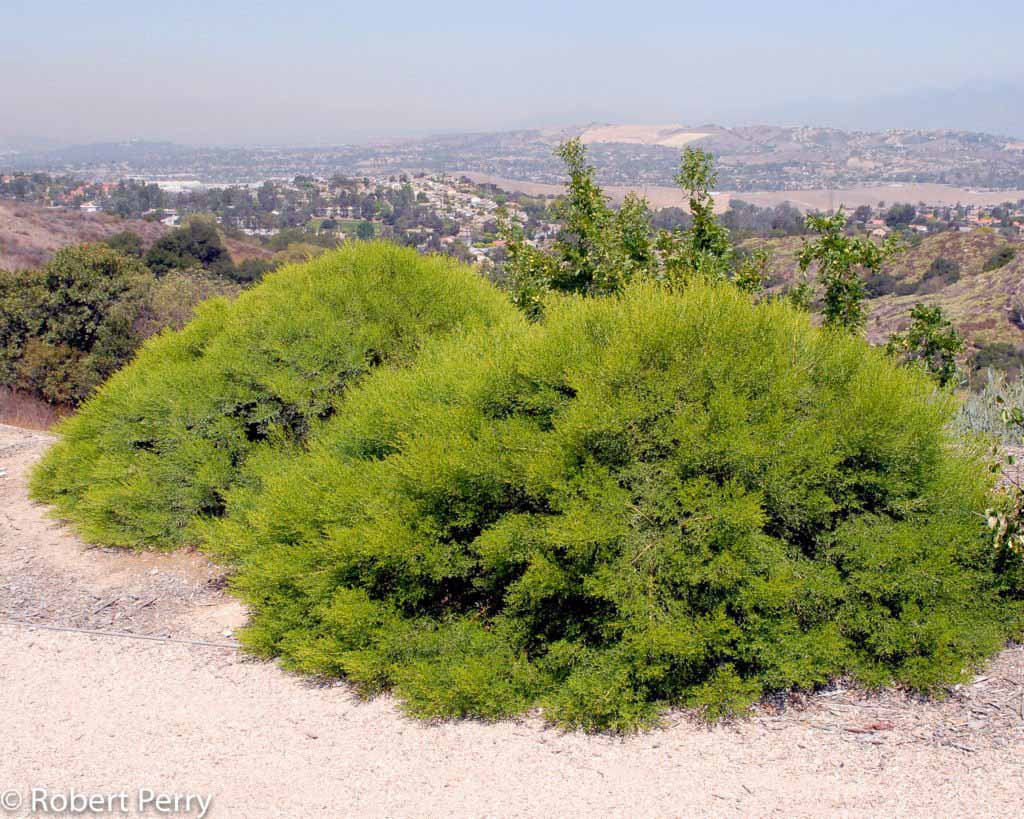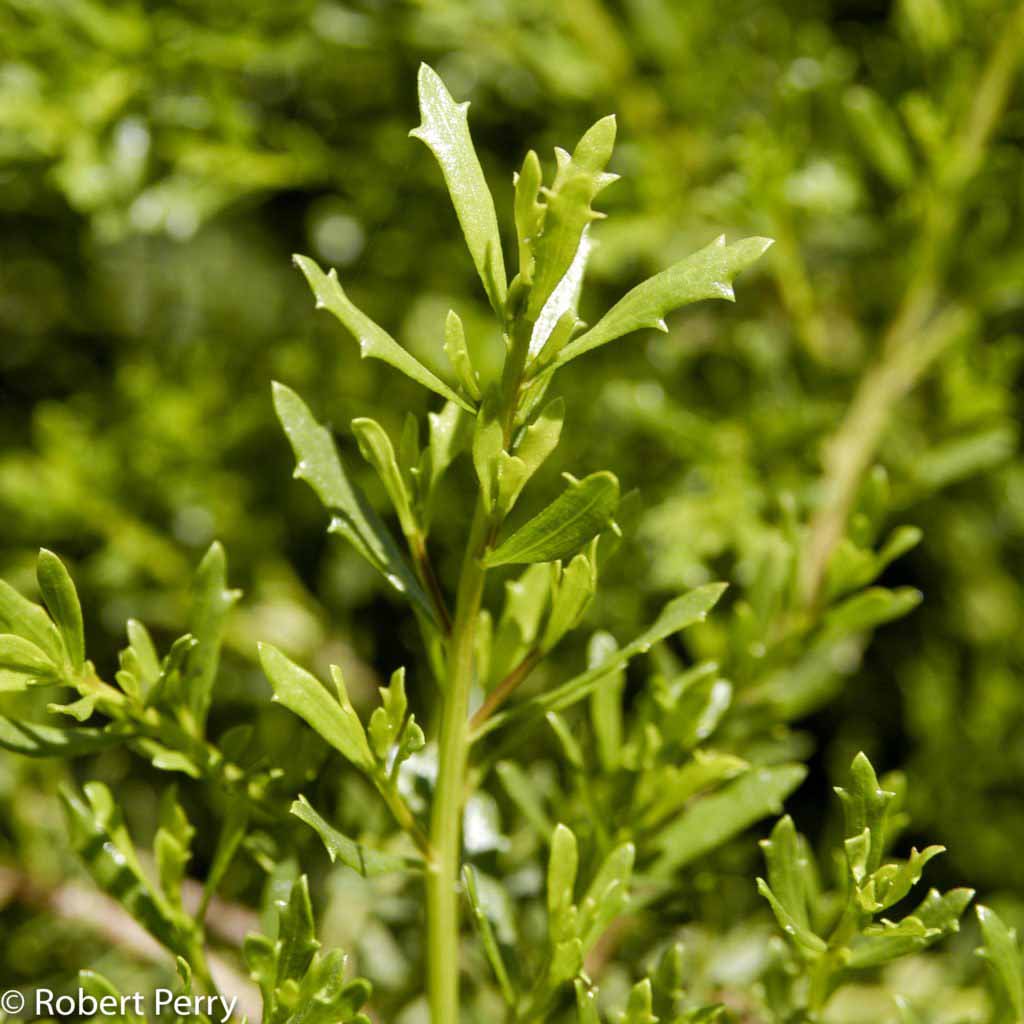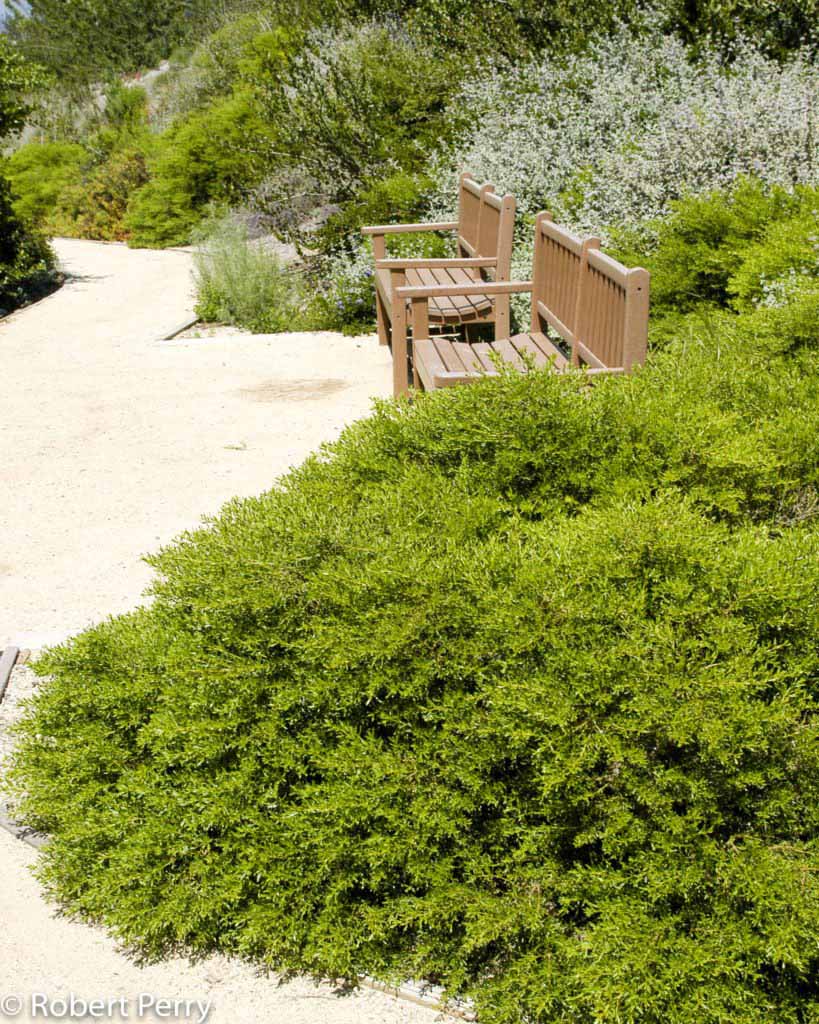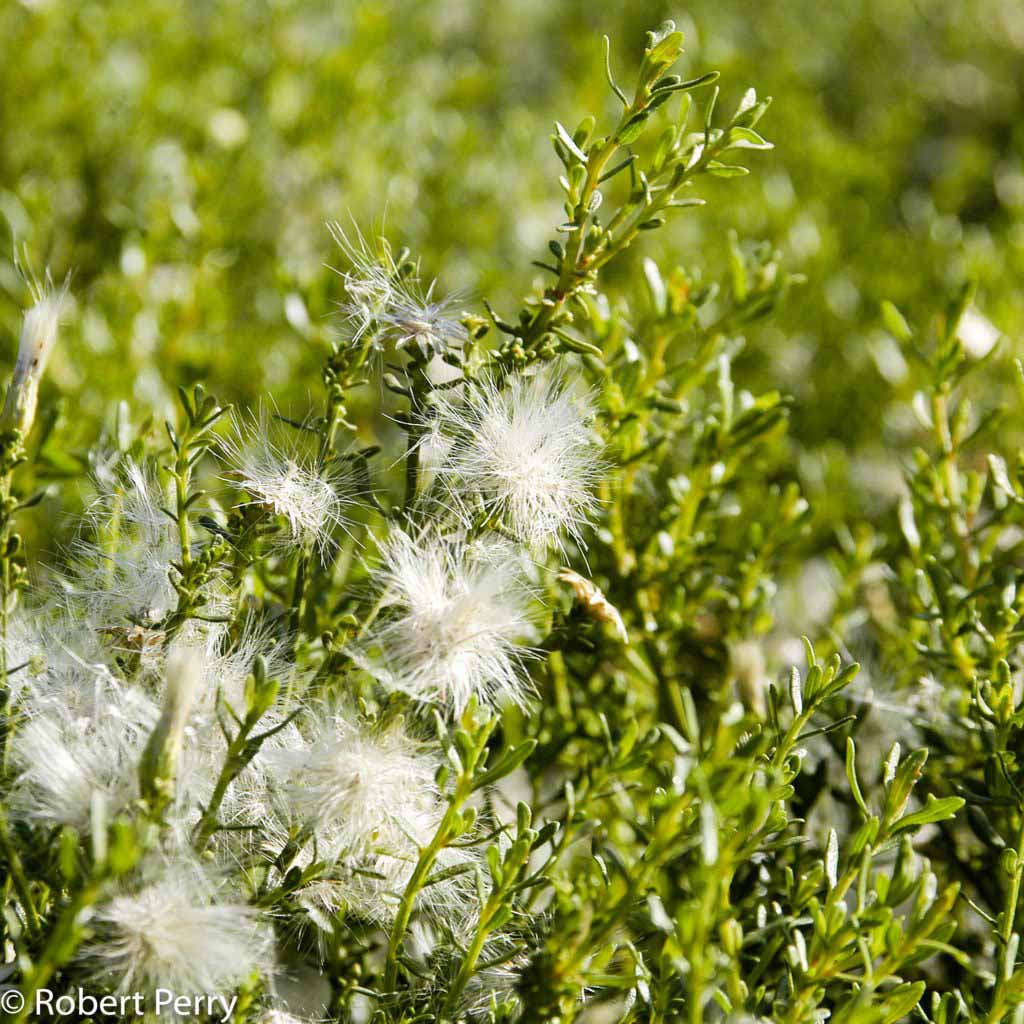Centennial desert broom is a hybrid cultivar between B. pilularis and the desert species B. sarothroides. It grows into a dense mounding to spreading shrub, 4-5 ft. high and 4-6 ft. across. Tiny green leaves to 1/8 in. wide have distinctly toothed margins; new growth is bright green, mature growth is darker.
The Centennial desert broom has proven to be a durable evergreen shrub throughout the Inland Empire and is a useful clipped hedge and slope plant for both commercial and residential landscapes. Plants produce abundant flowers and seed for birds and pollinator insects.
Centennial desert broom
Baccharis x ‘Centennial’
Description
Plant properties
Water needs
Maintenance
Commercial sites
Plant Type: Shrub
Foliage Character: Evergreen
Habit: Spreading, Mounding, Dense
Growth Rate: Moderate
Foliage Color: Medium green
Soil Adaptations: Well-draining soil, Clay
Exposure Adaptations: Heat, Aridity, All day sun
Function: Wildlife value, Parks and open space, Foliage accent plant, Banks, Attracts butterflies
Height: 2 ft. – 3 ft.
Width: 4 ft. – 6 ft.
Foliage Character: Evergreen
Habit: Spreading, Mounding, Dense
Growth Rate: Moderate
Foliage Color: Medium green
Soil Adaptations: Well-draining soil, Clay
Exposure Adaptations: Heat, Aridity, All day sun
Function: Wildlife value, Parks and open space, Foliage accent plant, Banks, Attracts butterflies
Height: 2 ft. – 3 ft.
Width: 4 ft. – 6 ft.
Watering Schedule: Low 1
For most situations, we recommend watering deeply every 3-4 weeks after establishment.
Learn how to apply this watering schedule to your landscape on our How to water waterwise and California native plants page.
Important Notes
- These are general guidelines. Always observe and adjust as necessary for your landscape.
- If it rains over 1” you will likely not need to water for at least another 3-4 weeks. Before watering again, check the soil. It should be significantly dry at least 4” below the soil surface before watering.
- If you have a “smart timer” or weather sensitive irrigation controller, it is best not to use the automatic weather adjusting features for plants in this category. While very useful for watering higher water demanding plants, those in this category have natural drought adaptations which mean they do not need to be watered more in warm weather. Using the weather adjusting features will result in either overwatering in summer or underwatering in fall and spring.
- It is important to group plants with the same water needs together in the landscape to avoid needing to over or under water plants when running your irrigation system.
Prune by heading back as much of the new-ish growth as desired in May or cut back as needed mid-winter (January – February) prior to spring growth (1). Every number of years, if looking like it needs to be reinvigorated, Baccharis can be “coppiced” by cutting all the way to the ground to promote new shoots and full regrowth (2). Coyote brush is adaptable to pruning. It can be cut back or sheared like a hedge to promote a denser plant. With some work most Baccharis pilularis or pilularis hybrids can be maintained as a formal hedge (3). This is probably the best small Baccharis to use as a small formal hedge in most of Southern California (S).
References
Sign Up For Free
To access all the features of this website, please create an account with us. Privileges include:
- Ability to print plant groups, lists and plant profiles
- Create your own plant groups
- Receive monthly updates by email
An online resource for you to learn about and choose the best plants for your inland Southern California landscape.
Promoting water conservation through education, stormwater capture, waterwise landscapes, and other initiatives.
We provide programs, services, and resources to serve audiences of all ages to cultivate a community-wide conservation ethic and build regional capacity for water resilience.



